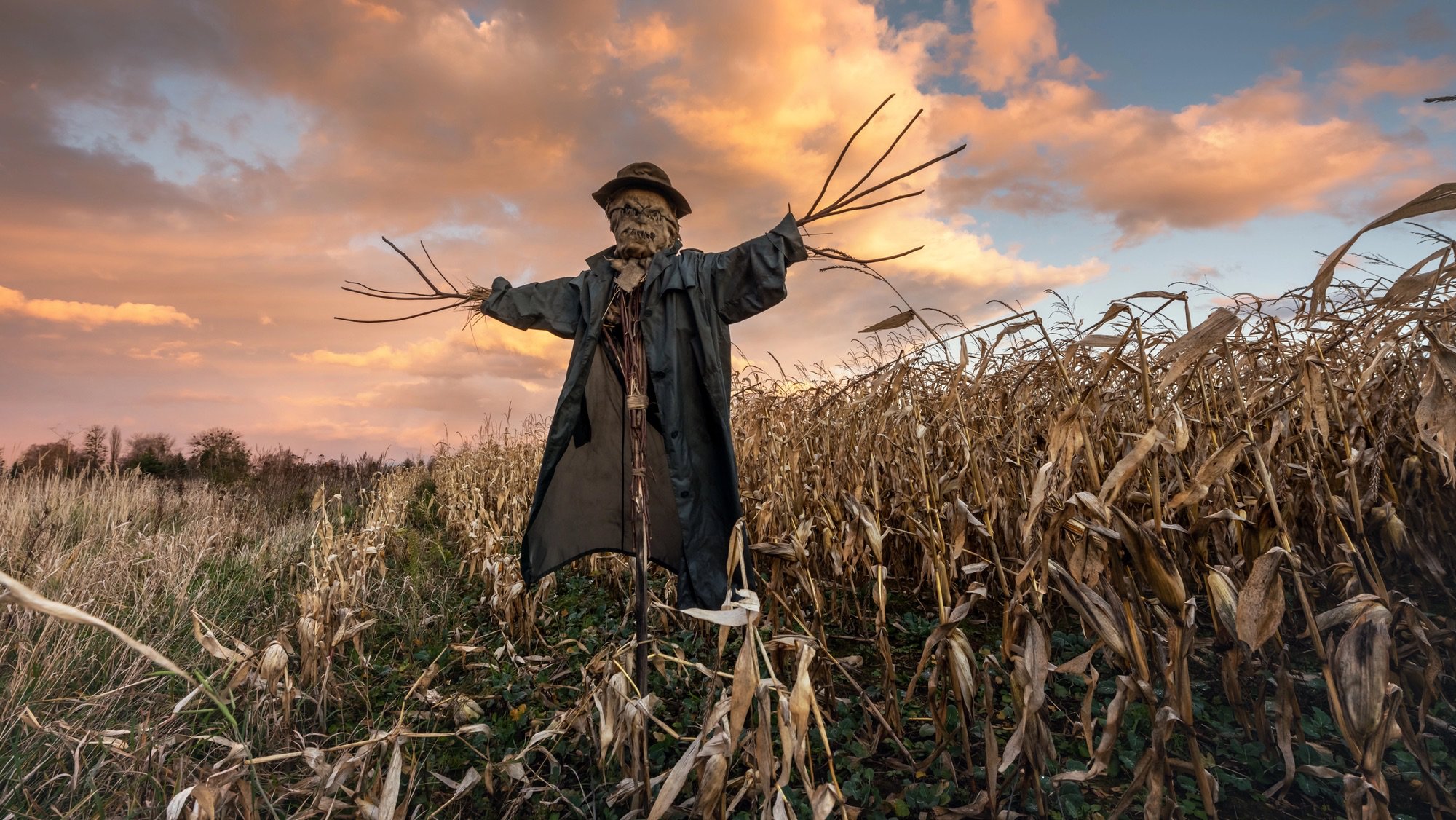Science
Scarecrows: From Ancient Protectors to Symbols of Autumn Horror

Scarecrows, once designed to deter birds from crops, have transformed into decorative symbols of autumn and Halloween in many cultures. Agricultural scientist Rebecca Brown notes that scarecrows are now primarily seasonal decorations rather than functional tools. “I don’t think I’ve ever seen a commercial farm that used a scarecrow with the intent of scaring birds,” she stated. This raises questions about the scarecrow’s historical effectiveness and its evolution into a staple of fall festivities.
The origins of scarecrows can be traced back to ancient agricultural practices. James P. Leary, a historian and folklorist, points out that while scarecrows have appeared in various forms throughout history, there has been limited research on their development. Historically, farmers have faced significant challenges from birds, with annual crop damage in the United States exceeding $100 million. Ancient records suggest that children were often tasked with scaring birds away from fields, as seen in ancient Egyptian artwork depicting “bird scarers.”
In ancient Egypt, children often played a role in protecting crops. However, as farming communities expanded, the need for more consistent deterrents led to the creation of scarecrow-like figures. These figures varied in design, with some resembling humanoids and others being more abstract. Throughout history, scarecrows were made from simple materials, such as wood, cloth, and scraps, reflecting local beliefs and practices. Many early scarecrows symbolized fertility deities or spirits, serving both protective and decorative purposes.
Despite their historical significance, scarecrows are not particularly effective in deterring birds over the long term. Susan G. Friedman, an avian behavior expert, explains that while birds may initially avoid a newly erected scarecrow, they quickly learn that it poses no real threat. This desensitization can occur within days to weeks, depending on the species and individual bird experiences.
In an effort to enhance their effectiveness, farmers experimented with various technologies as early as the 1930s. Some attempted to incorporate sound devices into scarecrows, while others explored mechanical solutions that allowed scarecrows to move unpredictably. Julia Ponder, a bird behavior specialist, emphasizes that while movement and noise can increase deterrence, the results are often short-lived.
As industrial farming practices became prevalent in the mid-20th century, many farmers turned to high-tech solutions like chemical deterrents and netting. Brown is currently researching alternatives such as laser beam turrets, which could deter birds more effectively, albeit at a cost ranging from a few hundred to over $10,000.
Despite the decline in scarecrow usage for crop protection, their cultural significance has persisted. The transition from agricultural utility to autumn decor reflects a blend of various agrarian traditions. Leary describes their modern association with fall as a “mashup-slash-conflation of distinct agrarian traditions,” marking the evolution of scarecrows into symbols of community and harvest celebrations.
Notably, festivals dedicated to scarecrows, such as the Chappell Hill Scarecrow Festival in Texas, celebrate the creativity and artistry involved in crafting these figures. Organizer William Atwood highlights the festival’s role in uniting local businesses and residents, emphasizing that it is a celebration of both the season and community spirit.
The link between scarecrows and horror aesthetics has developed more recently. Their eerie, quasi-human appearance fits well into the themes of Halloween and horror films. Robert Edgar, a British folklorist, notes that scarecrows’ uncanny nature plays on the fears and perceptions of urbanites regarding rural life.
While scarecrows retain their roots in agricultural heritage, their modern representation often leans into the spooky, making them a versatile symbol of the season. Despite their shift away from functional use, scarecrows continue to evoke a sense of nostalgia and creativity, intertwining the past with contemporary autumnal celebrations.
-

 Science2 weeks ago
Science2 weeks agoIROS 2025 to Showcase Cutting-Edge Robotics Innovations in China
-

 Politics2 weeks ago
Politics2 weeks agoJudge Considers Dismissal of Chelsea Housing Case Citing AI Flaws
-

 World2 weeks ago
World2 weeks agoBravo Company Veterans Honored with Bronze Medals After 56 Years
-

 Lifestyle2 weeks ago
Lifestyle2 weeks agoStone Island’s Logo Worn by Extremists Sparks Brand Dilemma
-

 Top Stories2 weeks ago
Top Stories2 weeks agoIndonesia Suspends 27,000 Bank Accounts in Online Gambling Crackdown
-

 Sports2 weeks ago
Sports2 weeks agoMel Kiper Jr. Reveals Top 25 Prospects for 2026 NFL Draft
-

 Health2 weeks ago
Health2 weeks agoStartup Liberate Bio Secures $31 Million for Next-Gen Therapies
-

 Health2 weeks ago
Health2 weeks agoTop Hyaluronic Acid Serums for Radiant Skin in 2025
-

 World2 weeks ago
World2 weeks agoHoneywell Predicts Record Demand for Business Jets Over Next Decade
-

 Sports2 weeks ago
Sports2 weeks agoYamamoto’s Mastery Leads Dodgers to 5-1 Victory in NLCS Game 2
-

 Politics2 weeks ago
Politics2 weeks agoNew Jersey Voters Urged to Register Ahead of November Election
-

 Lifestyle2 weeks ago
Lifestyle2 weeks agoMary Morgan Jackson Crowned Little Miss National Peanut Festival 2025









